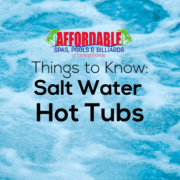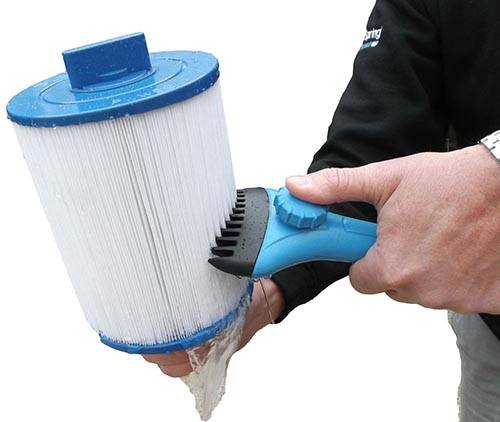YOUR HOT TUB CONCERNS: SEPARATING MYTHS FROM FACTS
Here, we will address your hot tub concerns. People have always loved soaking in hot water. Untold generations have sought out natural hot springs to soothe their muscles. From the thermal baths of the Roman Empire to the exclusive health spas of 19th century Europe, hot baths were often the province of the wealthy, a luxury to be coveted and indulged. Hot tubs have been around in their modern form for about a century and are now widely used and loved by people from all walks of life. In that time, we’ve learned a great deal about hot tubs, but we’ve also picked up a handful of lingering misconceptions. Here, we’ll look at the myths swirling around about hot tubs regarding health and maintenance, and separate the facts from the fallacies:
COMMON HOT TUB HEALTH MYTHS AND FACTS
Modern-day hot tubs are built to high standards of health and safety. They’re designed to protect their owners with safety features like slip-proof steps, precise temperature controls, and advanced water care systems to keep the water clean and safe. Wet surfaces are slippery, so use caution while moving in or around your hot tub. Particularly if you have reduced mobility, always use a staircase, and consider installing a handrail to help you safely enter and exit your hot tub.
Hot tub owners have other concerns about potential health risks, many of which can be prevented with a little cleanliness and care.
CONCERN: YOUR HOT TUB CAN BURN OR SCALD YOU
This is certainly a risk for hot tubbers looking to take a dip in a natural outdoors hot spring. Unless the hot spring is known to you or has its temperature measured and posted, you should approach your soak with caution. Some natural hot springs are pleasantly warm, while others may be dangerously hot.
Unlike a natural hot spring, however, your home hot tub comes with a thermometer, which will tell you the temperature of your water at a glance. While individual preference will vary, an ideal temperature for healthy adults is usually around 101 or 102 degrees. The United States Consumer Product Safety Commission recommends a maximum water temperature of 104 degrees; in fact, most modern-day hot tubs are specifically designed to never exceed this level of heat.
CONCERN: YOU CAN CATCH A DISEASE IN A HOT TUB
As with uncontrolled temperatures, uncontrolled biological processes—viruses, bacteria, or fungus—are a much greater concern in a natural hot spring than they are in the controlled environment of your hot tub. With hot tubs, it’s easy to avoid issues related to bacteria. The difference is care: The chlorine or other chemicals used in your spa’s water care system is designed to kill most harmful microorganisms. Medical conditions sometimes associated with hot tub use include both Legionnaire’s disease and folliculitis, which is sometimes referred to as “hot tub rash.” These conditions may be contracted from exposure to unclean hot tub water. To reduce your risk of exposure to these or any other conditions, be scrupulous about following the recommendations of your hot tub dealer for testing and caring for your hot tub water.
Some microorganisms, such as the parasite Cryptosporidium, are resistant to chlorine. Prevention is the best cure: To reduce the risk of dangerous contaminants entering your hot tub, always keep your hot tub securely covered with its own specially-designed cover when not in use, and make sure everyone who uses your spa showers before entering the water.
CONCERN: YOUR HOT TUB CAN BE DANGEROUS IF YOU’RE PREGNANT
This is a valid concern: The American Pregnancy Association does not recommend hot tub use for pregnant women, as raising the body temperature to above 101 degrees during the first trimester can result in an increased risk of birth defects. Pregnant women should always consult with their doctor before using a hot tub.
MYTH: YOUR HOT TUB MAY TRANSPORT YOU THROUGH TIME TO MEET YOUR YOUNGER SELF
Come on, really? It can’t. That was just a movie.
Owning a hot tub should be a worry-free experience.
COMMON HOT TUB MAINTENANCE MYTHS AND FACTS
Along with possible health worries, potential hot tub purchasers may have concerns about the amount of time, money, and effort that might go into operating and maintaining a spa.
CONCERN: YOUR HOT TUB WILL TAKE EVERY SPARE MOMENT YOU HAVE TO MAINTAIN
Far from it. Hot tubs do require some necessary maintenance: You’ll need to check your water levels a couple of times a week and perform any necessary adjustments. You’ll also have to change your water occasionally—usually every three or four months, though if you’re using the a salt water, your water will need to be changed as infrequently as once a year. Of course, you’ll have to replace your filters occasionally and attend to any other maintenance or service issues as they arise. If you own a high-quality hot tub, none of this should add up to a significant investment of your time.
CONCERN: YOUR ELECTRIC BILL WILL JUMP IF YOU USE YOUR HOT TUB
Hot tubs are heated by electricity, so yes, your electric bill will increase with use. A bargain-priced hot tub with an inefficient motor and insufficient insulation will require a great deal of power to keep the water at a constant high temperature, causing your monthly electric bill to increase by a lot more than if you had purchased a well-insulated spa.
However, if you invest in a high-quality hot tub with a base pan and effective insulation, the increase in your bill will be a lot less dramatic. The base pan separates the water in your tub from the ground, stopping heat from leaking out from the bottom. High-tech foam-spray insulation forms an excellent thermal seal between the sides of the tub and the ambient air. If you keep your hot tub covered with a high-quality insulated cover whenever you’re not soaking, your hot tub will be protected from heat loss on all sides. You’ll lose very little heat when your hot tub is not in use, which means you’ll use very little electricity to keep your water hot. A well-made premium hot tub with effective insulation can cost as little as $15 dollars a month—that’s about 50 cents per day—to run.
CONCERN: YOUR HOT TUB’S CHLORINE WILL MAKE YOUR EYES BURN
Chlorine is a potent chemical, no question—that’s why it’s used to kill bacteria and other contaminants in hot tubs and pools. Chlorine may cause eye irritation or skin rashes, especially if used at inappropriate levels. For chlorine-sensitive individuals, alternatives exist, such as a water care system that uses gentle salt water. If your hot tub is making your eyes burn, however, it might not be the chlorine—your pH levels may be imbalanced. If your hot tub’s water is too basic or too acidic, the fumes can make your eyes sting. Monitoring your hot tub’s pH level and adjusting it as necessary can prevent any unpleasant sensation.
MYTH: YOU CAN USE SWIMMING POOL CHLORINE TABLETS IN YOUR HOT TUB
While swimming pools and hot tubs often both use chlorine to keep the water clean and fresh, the amounts are different. Using tablets designed for swimming pools will result in incorrect levels of chlorine in your hot tub and can throw off your hot tub’s pH levels. Only use products specifically designed for hot tub use in your hot tub.
CONCERN: YOUR HOT TUB WILL REEK OF CHLORINE
If you use chlorine to keep your hot tub water clean, you may be able to detect a faint chemical scent in the surrounding air. If the chlorine smell is very strong and pungent, however, there’s probably a different cause: When chlorine bonds with nitrogen or ammonia, it forms a compound called chloramine. Chloramine has a noxious odor and can cause your eyes to tear; it’s not a welcome guest in your hot tub. The nitrogen or ammonia can be introduced into your hot tub through various ways. Urine is a likely culprit, so make sure everyone who uses your hot tub is able to follow your rules for basic conduct and hygiene.
While hot tub ownership poses some specific concerns, a little knowledge will help you navigate any potential trouble spots. Here’s what it all boils down to: If you use your hot tub in a conscientious manner and follow the recommendations of your trusted local dealer, your spa will be a safe and reliable source of great joy for you and your family for years. If you have any other questions, take a look through the information on our website or download our brochure.
The Unique Team – WE MAKE IT FUN TO STAY HOME!
-Shari Provan-Crofut
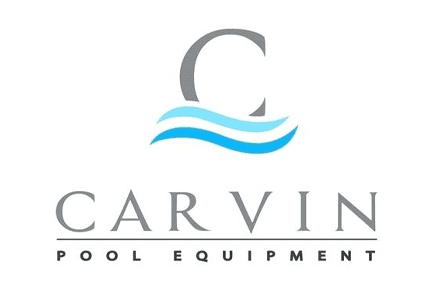

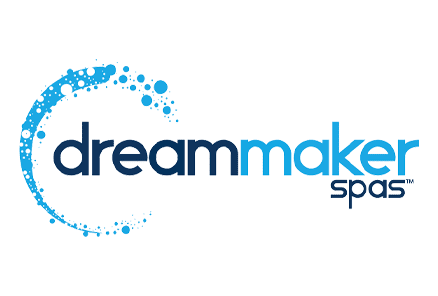
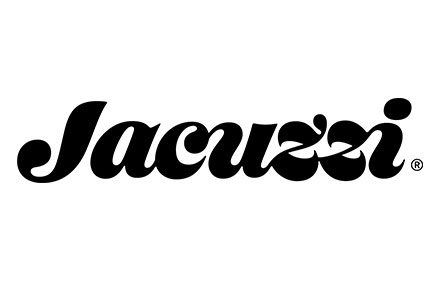
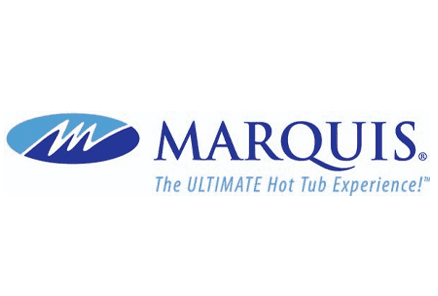

 2326 E.Edgewood Dr. Lakeland, Fl.
2326 E.Edgewood Dr. Lakeland, Fl.

